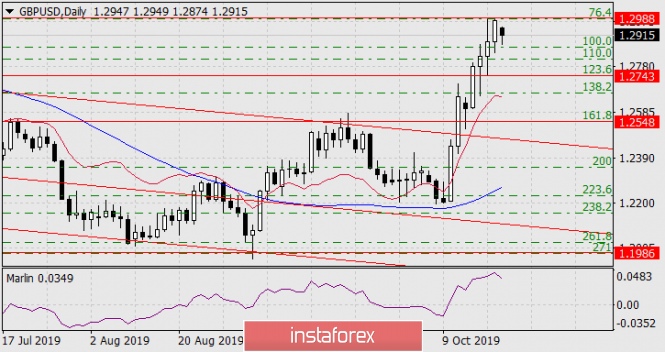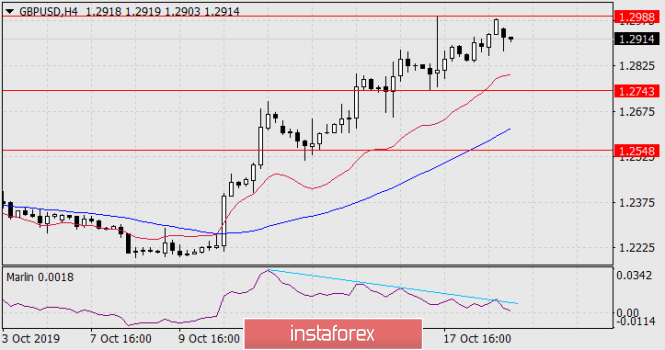GBP/USD
The British Parliament was supposed to vote on the Johnson-EU deal last Saturday, but the first thing he passed was a law requiring the prime minister to request an extension of the Brexit date. Boris Johnson instantly replied that the law was not written to him, but a little cooling down (after the House of Commons Speaker John Bercow threatened to file a petition for deferment) and having talked with Donald Tusk, he nevertheless sent such a request. Now the deadline is January 31. The government has put forward a draft of the deal with revisions for today, but the deputies have already made a number of serious amendments, including, possibly, a second referendum. As a result, the vote may be delayed again in the sense that amendments will be adopted, and this process may take a long time. At the same time, Parliament begins to consider a vote of confidence in the prime minister. If the government and Parliament do not reach a compromise on the draft deal, a re-election of Parliament may be called.
The markets met the weekend news calmly. The pound opened the week with a slight downward gap, but this is a purely technical aspect, the gap can be closed soon and the pound will continue to decline. Earlier we said that the British currency will weaken even with the ratification of the deal on the market effect of the sale on the fact. At the same time, while Johnson's proposal is worse than May's, it includes a customs border with Northern Ireland and "level playing field" (with the EU), including the rule of law of the EU.

On the daily chart, the Marlin Oscillator began to reverse from the overbought zone. The first goal of the decline is the Fibonacci level of 123.6% at the price of 1.2743, then we are waiting for the price at the level of 161.8% at the price of 1.2548.

On the four-hour chart, the oscillator signal line after multiple divergence is about to enter the decline zone. Technically, the situation is reversed.
The material has been provided by InstaForex Company - www.instaforex.com